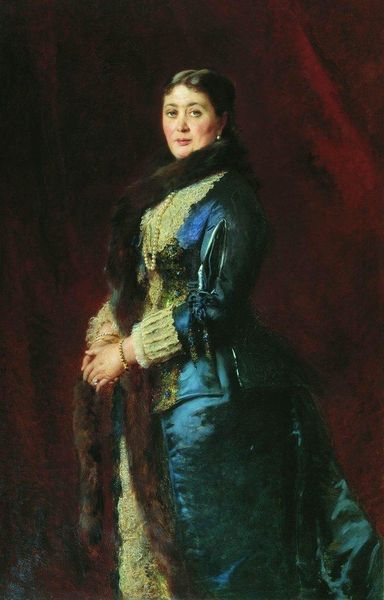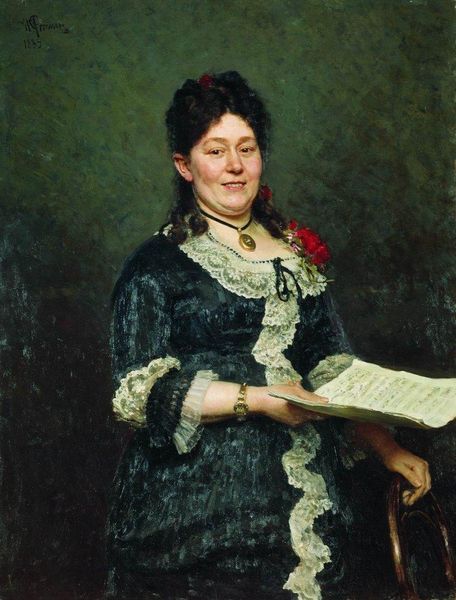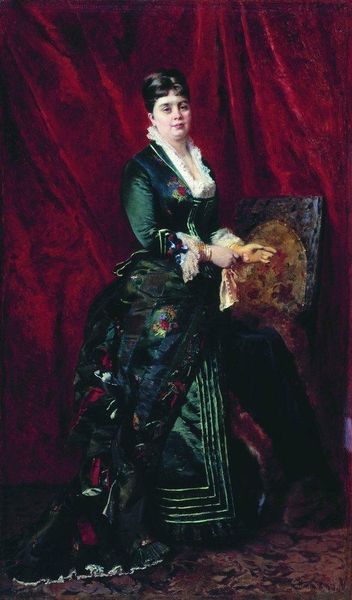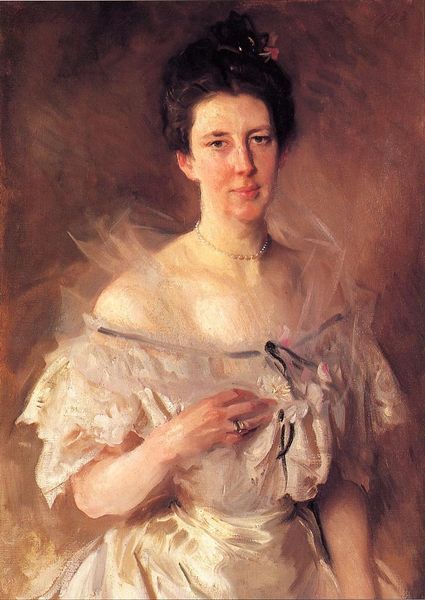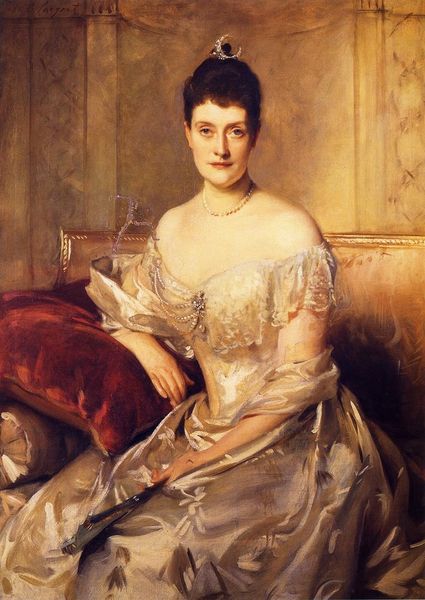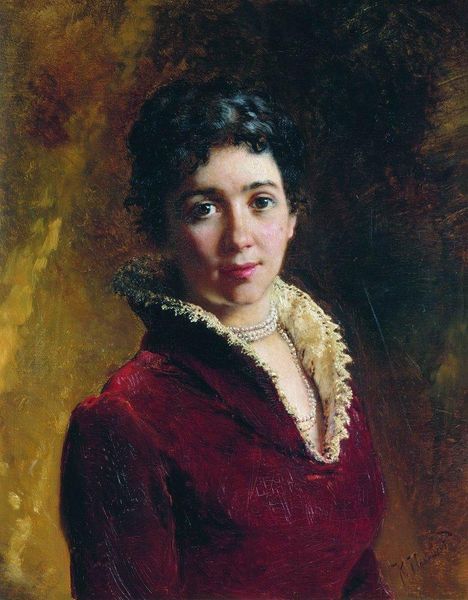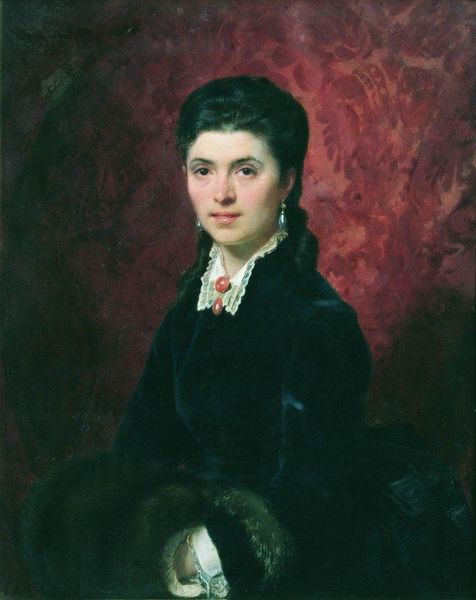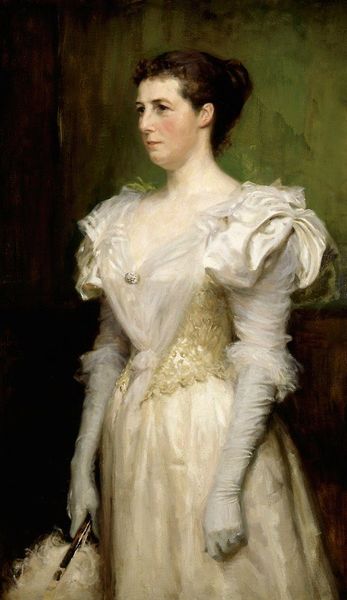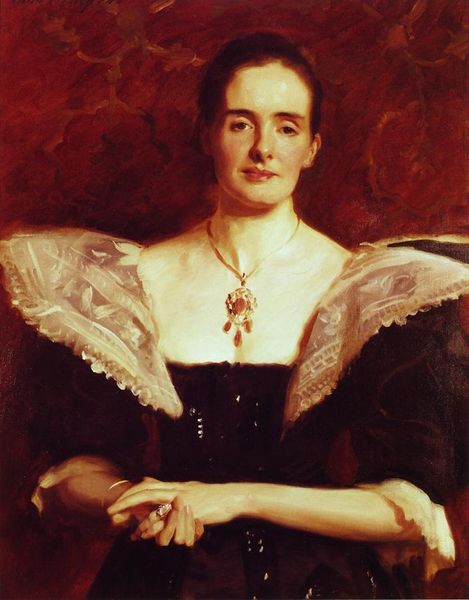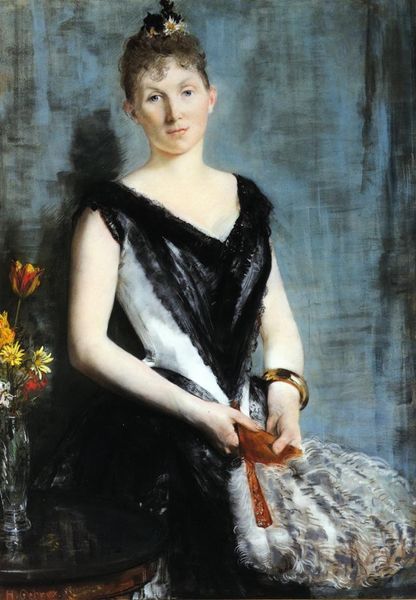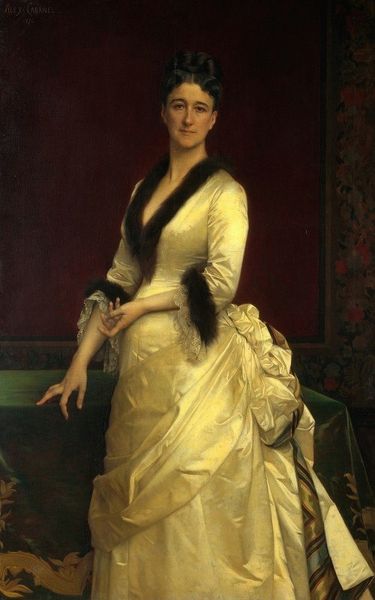
Copyright: Public domain
Curator: Welcome. We’re standing before Konstantin Makovsky's "Female Portrait" from 1883, executed in oil paint. Editor: My first impression is one of subdued elegance. The palette is restrained, and the woman's gaze holds a quiet intensity, set against the implied opulence of the backdrop. Curator: Precisely. The formal arrangement follows classical portrait conventions. Consider how the soft gradations of light articulate her features and create volume. Observe the subtle tonal shifts in the background, offering depth without drawing attention away from the subject. It’s all carefully calibrated to emphasize her serene presence. Editor: While the composition and color choices evoke a sense of idealized beauty, my gaze keeps returning to the details of her dress. The lace sleeves and the pearl necklace – imagine the laborious, often unseen, hours involved in creating those materials! How does the painting subtly reflect the labor that contributes to this visual presentation of class and gentility? Curator: That's a fascinating point. Makovsky, trained in the academic tradition, presents a clear social narrative, but within it, the textures themselves possess a sort of symbolism. The smooth, unbroken planes of the skin contrast directly with the filigree of the lace, drawing us into questions about fragility and construction. How are identities fabricated? Editor: And the pearl necklace itself represents a global material network, its value determined through human labor in pearl harvesting and trade. What are the economic dimensions that inform even this apparently simple representation of a woman of that period? I’m also keen on what the material conditions reveal about the society the artist lived in. Curator: Indeed, the painting functions as a layered visual document. The realism coexists with an undeniable degree of aesthetic idealization, doesn't it? This reveals something about Makovsky's complex engagement with the artistic and societal values of his time. Editor: It makes me think more deeply about who is served and who is made invisible in representations of that era, especially when the very materials that constitute her beauty are deeply imbricated within systems of labor exploitation. Curator: Absolutely, seeing both the surface and the structure that sustains it lets us apprehend more acutely the subtle ways this "Female Portrait" still reverberates with meaning today. Editor: I agree, understanding it in its materiality invites important questions about the relationship between beauty, power, and social history.
Comments
No comments
Be the first to comment and join the conversation on the ultimate creative platform.
